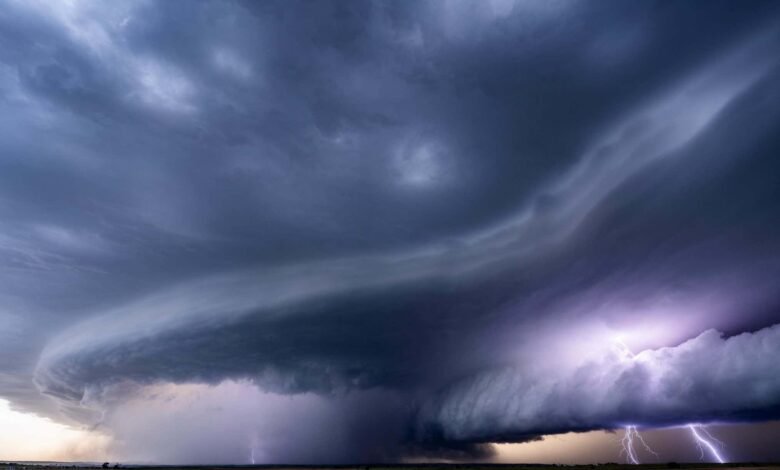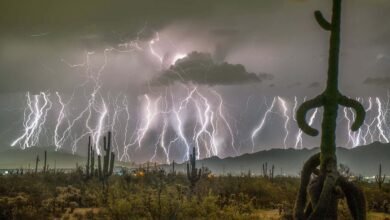Meet the storm chasers on the hunt for extreme hail


A tornado captured near Arnett, Oklahoma
Ethan Mok
Most storm chasers live for tornadoes. A few live for hailstorms. That is certainly true of the more than 50 weather scientists involved in the largest-ever field survey focused on extreme hail, now under way across the US Great Plains.
Since mid-May, the researchers involved in the ICECHIP project have raced from the Texas panhandle to South Dakota in search of storms that produce the biggest hail – from golf balls (pictured below) to grapefruits of ice. Hail causes billions of dollars of damage each year, but forecasts of which storms will produce the most hazardous kinds are unreliable. ICECHIP wants to change that by measuring everything possible about these storms and relating it to the ice they generate.

An average day of the campaign involves intensive forecasting to track down a storm like the one in the main picture, captured near Arnett, Oklahoma, on 17 June by Ethan Mok, a member of the ICECHIP team. A tornado, here obscured by rain, has just touched down in the hail core of the storm, where most of the hail is falling.

Vehicles surround the storm to measure it
Will Sardinsky
As a fortified truck called the Hail Hunter drives into the core to collect the biggest, freshest stones, dozens of other vehicles (pictured above) surround the storm to measure it using mobile radar, weather balloons and a fixed-wing drone.

Hail-impact disdrometer
Will Sardinsky
Other teams place specialised equipment such as a hail-impact disdrometer (shown above) in the path of the storm to record the size distribution of the hail and its impact velocity.

Once the storm has passed, the researchers return to survey the damage across the swathe of hail and collect as much ice as they can before the precious data melts (pictured above).
Topics:
Source link




